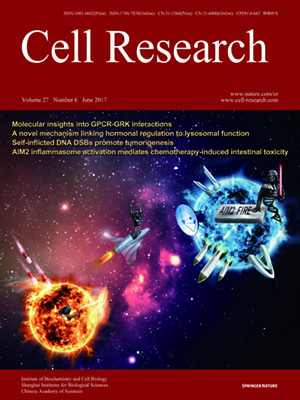
Volume 27, No 6, Jun 2017
ISSN: 1001-0602
EISSN: 1748-7838 2018
impact factor 17.848*
(Clarivate Analytics, 2019)
Volume 27 Issue 6, June 2017: 834-837
LETTERS TO THE EDITOR
Mitochondrial replacement by pre-pronuclear transfer in human embryos
Keliang Wu1,2,3,4,5,*, Tailai Chen1,2,3,*, Sexin Huang1,2,3, Cuiqing Zhong4,5, Junhao Yan1,2,3, Xiaoyu Zhang6,7, Jinsong Li6,7, Yuan Gao1,2,3, Han Zhao1,2,3 and Zi-Jiang Chen1,2,3,4,5
1Center for Reproductive Medicine, Shandong Provincial Hospital Affiliated to Shandong University, Jinan, Shandong 250001, China
2National Research Center for Assisted Reproductive Technology and Reproductive Genetics, Jinan, Shandong 250001, China
3The Key laboratory for Reproductive Endocrinology of Ministry of Education, Jinan, Shandong 250001, China
4Center for Reproductive Medicine, Ren Ji Hospital, School of Medicine, Shanghai Jiao Tong University, Shanghai 200135, China
5Shanghai Key Laboratory for Assisted Reproduction and Reproductive Genetics, Shanghai 200135, China
6State Key Laboratory of Cell Biology, CAS Center for Excellence in Molecular Cell Science, Institute of Biochemistry and Cell Biology, Shanghai Institutes for Biological Sciences, Chinese Academy of Science, Shanghai 200031, China
7Shanghai Key Laboratory of Molecular Andrology, Institute of Biochemistry and Cell Biology, Shanghai Institutes for Biological Sciences, Chinese Academy of Science, Shanghai 200031, China
Correspondence: Zi-Jiang Chen, Tel: +86-531-85651190 E-mail: chenzijiang@hotmail.com; Han Zhao, E-mail: hanzh80@yahoo.com; Yuan Gao,(gaoyuan@sduivf.com)
Mitochondrial DNA (mtDNA) diseases are maternally transmitted to offspring 1. It has been proposed to prevent mtDNA disease inheritance through mitochondrial replacement therapy (MRT), using nonpathogenic mitochondria from donor oocytes to replace defective maternal mitochondria. Three strategies, including maternal spindle transfer (MST), pronuclear transfer (PNT) and polar body transfer (PBT), have been applied in human embryos2,3,4,5. All these techniques require the use of cytochalasin B (CB) or nocodazole, the cytoskeleton disruptors, to assist the isolation of the chromosome-spindle complex or pronucleus. However, the safety of using these cytoskeleton disruptors in clinical applications of human embryo-related manipulation has not been rigorously evaluated. In this study, we show a novel technique, in which female pre-pronucleus (PPN) can be isolated shortly after fertilization in a condition without cytoskeleton disruptors and then be successfully used for MRT, leading to the generation of human embryonic stem cell (ESC) lines with mtDNA carryover at very low levels.
10.1038/cr.2017.48
FULL TEXT | PDF
Browse 1901


